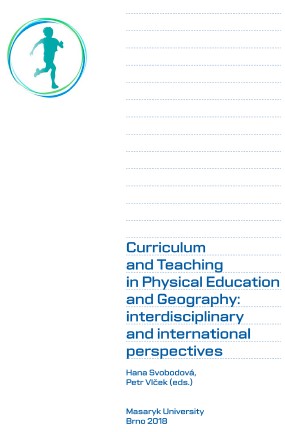Effectiveness of the swimming education of children with autism spectrum disorder
Effectiveness of the swimming education of children with autism spectrum disorder
Author(s): Irena Čechovská, Vladimír Süss, Jan Carboch, Kristýna Hubená
Subject(s): School education, Health and medicine and law, Sports Studies, Inclusive Education / Inclusion, Pedagogy
Published by: Masarykova univerzita nakladatelství
Keywords: swimming education; autism spectrum disorder;
Summary/Abstract: Introduction (basis): Like the common population, also children with autism spectrum disorders (ASD) should be swimming literate – they should be equipped with such skills to be able to safely handle the aquatic environment and consequently to be able to make use of the swimming locomotion as of a lifelong motional activity for maintaining their health. Regarding the content of the swimming education for children with ASD, it is based on the preparatory and on the elementary swimming education programmes. However, it is distinguished by many specialities (suitable material conditions, use of specific methods, teacher-pupil interaction) – all this must be considered while creating such programmes. Aim: Applying structured learning on the concept of common preparatory and elementary swimming education for children with autism spectrum disorders. Methods: Five probands (boys) aged 6–10 years took part in this study. medical diagnosis: Asperger syndrome, infantile autism, atypical autism. The interventional programme lasted for 10 months (school year 2016/2017) and it was divided into two blocks (1st and 2nd term). Each block (term) consisted of 18 lessons once a week. Each lesson was 30 minutes long. In the first lessons, an entry diagnostic was performed by the help of Štochl Scale of swimming skills assessment. At the end of the first block, an output diagnostic was performed by using the same scale. The 3rd assessment took place at the end of the 2nd block. The final assessment of the interventional programme took place three months after the third measurement at the end of the 2nd block (in September 2017). Results: From the assessment of the results of the scale by the help of the sign test all probands have experienced an overal improvement in all swimming skills between the measurements 1 and 2, 3 and 4, 1 and 4. Discussion: According to the above presented results of this study, it can be said that structured learning was a well-chosen technique for the swimming education of children with ASD. Thanks to the structuralisation, the children have obtained basic swimming skills and they have built up a solid ground for a training of swimming styles. We consider the achieved results for very valuable for other
swimming education of children with ASD.
- Page Range: 61-67
- Page Count: 7
- Publication Year: 2018
- Language: English
- Content File-PDF

